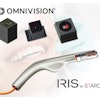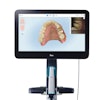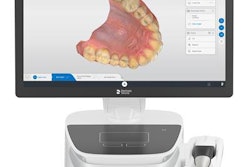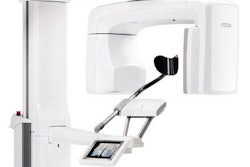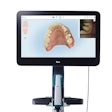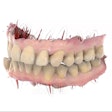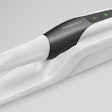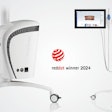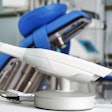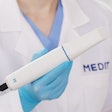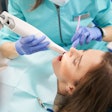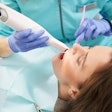
Researchers compared five intraoral scanners in a new study. Which rated best for precision and trueness?
While one scanner came out as best in five of six categories measured, all the scanners performed exceptionally for trueness, the researchers reported in BMC Oral Health (June 6, 2019).
For trueness, the researchers found "exceptional performance of all [the intraoral scanners] investigated in scanning for [single crowns] and short-span restorations on implants," wrote the authors, led by Francesco Guido Mangano, DDS, PhD, of the department of prevention and communal dentistry at the Sechenov First Moscow State Medical University in Russia.
5 scanners
The researchers conducted an in vitro study to assess the accuracy of five different intraoral scanners in the impressions of single and multiple implants.
Plaster models served as stand-ins for a partially edentulous maxilla to be restored with a single crown and a partial prosthesis and also a totally edentulous maxilla to be restored with a full arch. The researchers first scanned the models with a desktop scanner (to capture reference models) and then with the five intraoral scanners:
- CS 3600 (Carestream Dental)
- Trios 3 (3Shape)
- CEREC Omnicam (Dentsply Sirona)
- DWIO (Dental Wings)
- Emerald (Planmeca)
Each tooth model was scanned 10 times with each scanner. The researchers then loaded the datasets into a reverse-engineering software that superimposed the images on the corresponding reference models to evaluate trueness and on each other within groups to determine precision. Trueness is the difference between the measurement values of the reference model and test models, while precision is the repeatability of the scans between the scanners being tested (a lower number is better).
The Carestream Dental CS 3600 had the best trueness in all three categories (see table below), the researchers reported. However, they also found significant differences between scanners.
| Mean trueness of 5 intraoral scanners (mean ± standard deviation) |
|||||
| CS 3600 | DWIO | Emerald | Omnicam | Trios 3 | |
| Single crown | 15.2 ± 0.8 µm | 27.8 ± 3.2 µm | 43.1 ± 11.5 µm | 28.4 ± 4.5 µm | 22.3 ± 0.5 µm |
| Partial prosthesis | 23.0 ± 1.1 µm | 49.8 ± 5.0 µ | 49.3 ± 5.5 µm | 38.1 ± 8.8 µm | 28.5 ± 0.5 µm |
| Full arch | 44.9 ± 8.9 µm | 92.1 ± 24.1 µm | 66.3 ± 5.6 µm | 70.4 ± 11.9 µm | 46.3 ± 4.9 µm |
The CS 3600 also had the best precision in the single crown and partial prosthesis categories, while the Trios 3 had the best precision in the full-arch category, the researchers reported (see table below).
| Mean precision of 5 intraoral scanners (mean ± standard deviation) |
|||||
| CS 3600 | DWIO | Emerald | Omnicam | Trios 3 | |
| Single crown | 11.3 ± 1.1 µm | 27.1 ± 10.7 µm | 32.8 ± 10.7 µm | 30.6 ± 3.3 µm | 15.2 ± 0.8 µm |
| Partial prosthesis | 17.0 ± 2.3 µm | 34.8 ± 10.8 µm | 29.9 ± 8.9 µm | 43.2 ± 9.4 µm | 21.0 ± 1.9 µm |
| Full arch | 35.7 ± 4.3 µm | 111.0 ± 24.8 µm | 61.5 ± 18.1 µm | 89.3 ± 14.0 µm | 35.6 ± 3.4 µm |
Clinical implications
The authors noted that this was an in vitro study and that the scanned models were not made of dentin and enamel. In addition, the study may not reflect the accuracy of the most up-to-date machines currently on the market, as Dentsply Sirona, for instance, has debuted a new scanner since the study was conducted.
Nevertheless, the data have important clinical implications as practitioners can draw indications for the use of different scanners in different clinical contexts, the authors noted.
"The [intraoral scanners] showed significant differences between them, both in trueness and in precision," they concluded.

